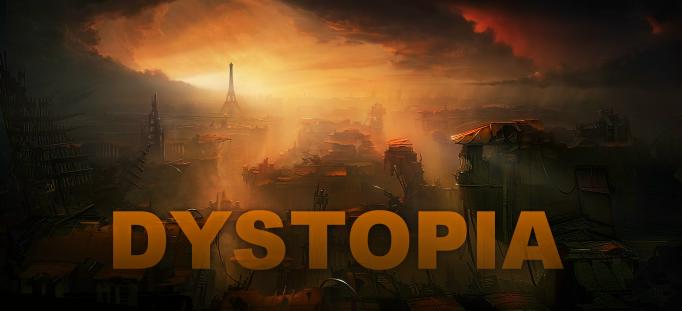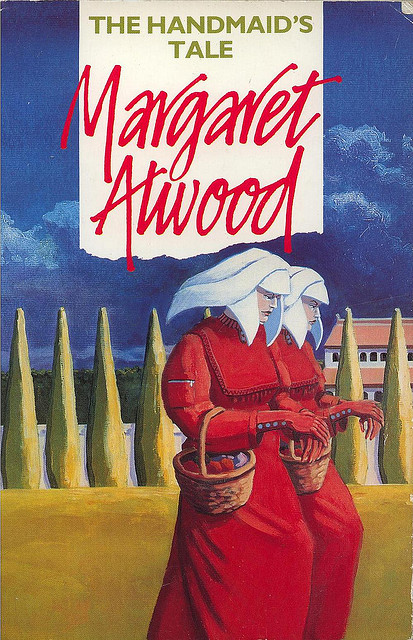 On Women and Love in Dystopian Novels
On Women and Love in Dystopian Novels
Today my guest author is Beth Elisse, and she has written a thought-provoking look at dystopian stories, which have become such hot property in the last few years — particularly in the Young Adult genre.
______
Novels foreseeing the fall – and subsequent repression – of human society have become central to the canon of Western literature over the past 150 years.
From George Orwell’s Nineteen Eighty-Four to Lois Lowry’s The Giver, many classic works of film and literature chronicle the lives of male protagonists placed in nightmarish future worlds. In recent years, however, new characters and themes have arisen within the genre. As a culture, we’ve descended deeper into dystopia fantasy, developing an appetite for stories with romantic undertones as well as those aimed towards young adults. Strong females have risen to take over the role of heroine in these fictional societies, bringing dystopian ideals to the forefront of our collective imaginations. As the world outside has changed, so too have depictions of it at its worst.
 Dystopias are commonly defined as “societies characterized by poverty, suffering, and oppression.” Numerous writers began heavily exploring the notions which would come to define the ‘dystopian genre’ during the early 20th century. Turbulent global politics and a rapidly modernizing society led to anxieties about what all these changes would bring. Though most of these early novels were written from male perspectives, Jack London’s pioneering 1908 novel The Iron Heel was written from the diary perspective of a woman. The heroine, Avis Everhard, rails against the corrupt and tyrannical Oligarchy. Though the novel critiques the wealth and greed of a capitalistic society, it also suggests that socialist revolutions are doomed to fail. London’s novel arrived at a time when women were still fighting for the right to vote, breaking ground by showing firsthand the role females play in advancing the revolutionary cause.
Dystopias are commonly defined as “societies characterized by poverty, suffering, and oppression.” Numerous writers began heavily exploring the notions which would come to define the ‘dystopian genre’ during the early 20th century. Turbulent global politics and a rapidly modernizing society led to anxieties about what all these changes would bring. Though most of these early novels were written from male perspectives, Jack London’s pioneering 1908 novel The Iron Heel was written from the diary perspective of a woman. The heroine, Avis Everhard, rails against the corrupt and tyrannical Oligarchy. Though the novel critiques the wealth and greed of a capitalistic society, it also suggests that socialist revolutions are doomed to fail. London’s novel arrived at a time when women were still fighting for the right to vote, breaking ground by showing firsthand the role females play in advancing the revolutionary cause.
The Iron Heel was, despite its female protagonist, predominantly defined by its heavy-handed political pontifications. In the skillful hands of Orwell and Huxley, however, the socio-cultural nuances of life in a dystopian regime began to appear. Tragic stories of love and lust woven throughout the novels Nineteen Eighty-Four and Brave New World. Margaret Atwood’s 1985 novel A Handmaid’s Tale has rightly been referred to as a ‘feminist’ dystopian novel, perhaps the first of its kind. This story mines the horror of sexual subjugation under a highly sexist government. The feminist themes of Atwood’s novel continue to strike a wide range of resonant chords.
The modern revival of dystopian and fantasy literature attests to the struggles of our times. Collectively we are at war with a changing climate, tyrannical political figures, and a broad spectrum of social injustices. Young people, who have inherited these issues, want to fight back. Most contemporary dystopian literature reflects the dream of bettering this imperfect world. Teen literature has aptly captured this youthful spirit of discontent and rebellion.
Many readers have begun to complain that the dystopian genre is now too teen-oriented. Though it’s true that novels like The Hunger Games, Divergent and The 5th Wave are geared towards a younger audience, these novels remain a powerful tool for critiquing modern society. The fact that these stories have been adapted for the big screen has only broadened their reach. Outside the theater via local channels or streaming, anyone can look to these stories to draw comparisons to the current American political climate. Nowadays, individuals on both the political left and right exemplify the suffocating extremes which define a ‘dystopian’ world.
The wickedly smart and physically strong heroine of modern dystopian literature is the physical manifestation of contemporary feminism. Characters like Tris Prior and Katniss Everdeen are unafraid to voice their opinions, change their allegiances, and stand up for the causes they believe in. These characters are strong role models for budding young feminists who must continue to fight for wage equality, reproductive rights, and personal respect. The prominence of romance in modern dystopian literature is likely reflective of these books’ primary audience – young women seeking to define both themselves and their desires in today’s dating environment. Some argue that love stories negate the strength of the female characters in these novels. Others argue that romance is simply a necessary plot element, adding a glimmer of hope to a historically melancholy genre. Either way, romance has become a fundamental part of the dystopian genre as it currently stands.
Though romance plays a role in many dystopian tales, these love stories are almost always secondary to the “real” stories at hand. Katniss and Peeta’s love for one another only begins to blossom after they have worked together as teammates in the “Hunger Games.” Fighting to survive takes priority over romance. The relationship between Tris and Tobias in Divergent is never as important as Tris’ fight against evil and corruption. In short, romance is a mere escape for the characters in these novels.
The dystopian genre has long commented on the social struggles of our society and it’s likely that it will continue to do so well into the future. As long as love prevails, we will have a reason to battle a ‘dystopian’ future defined by evil and hate.
___
Beth Elisse is a writer and blogger based in Chicago, IL. After graduating from DePaul University she moved to Asia for several years, working as an English teacher in South Korea. Now she’s back in the Windy City working to finance her next trip abroad. In her free time you can find her trying to teach her rabbit, Noam Chompsky, new tricks.